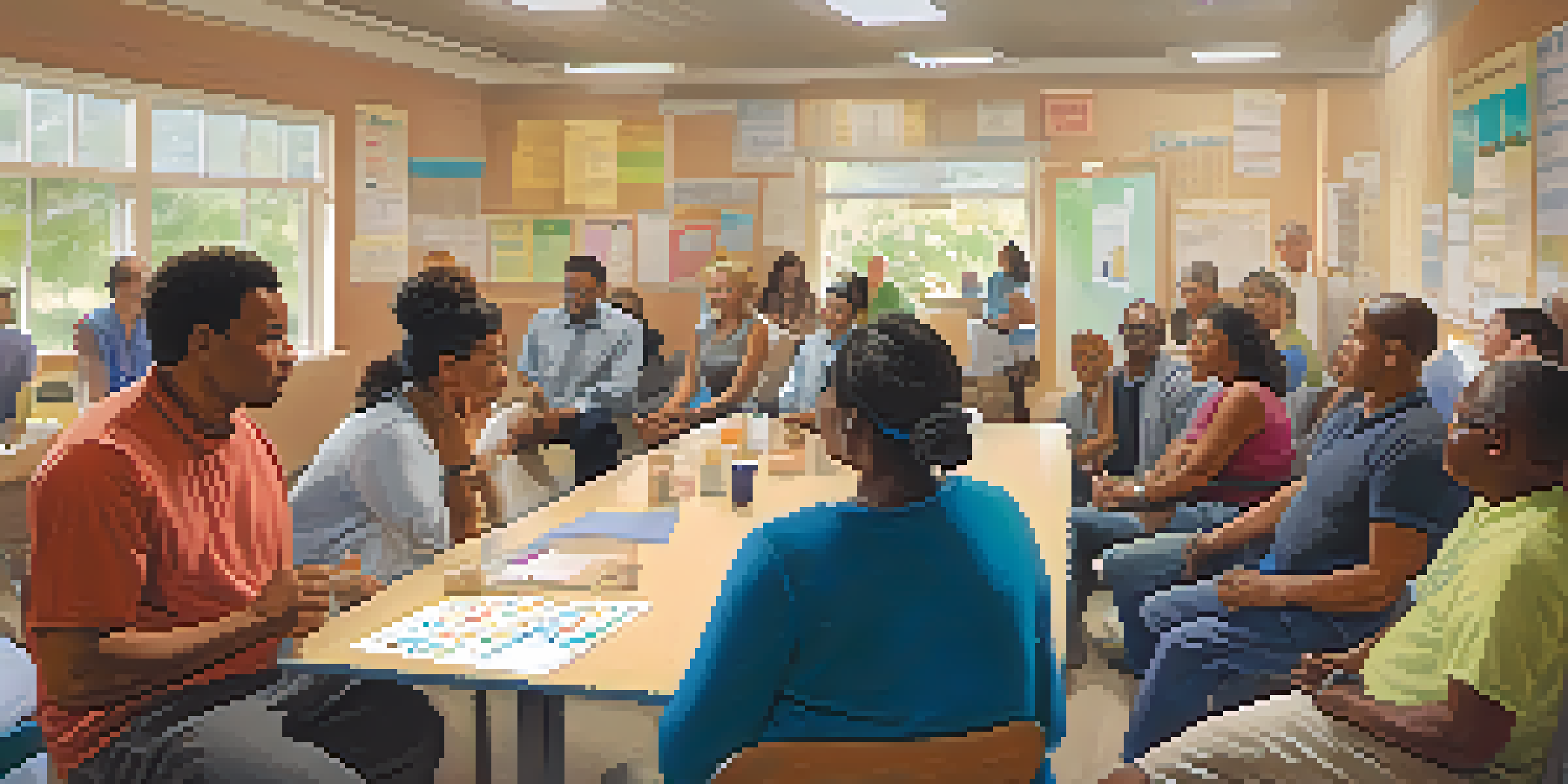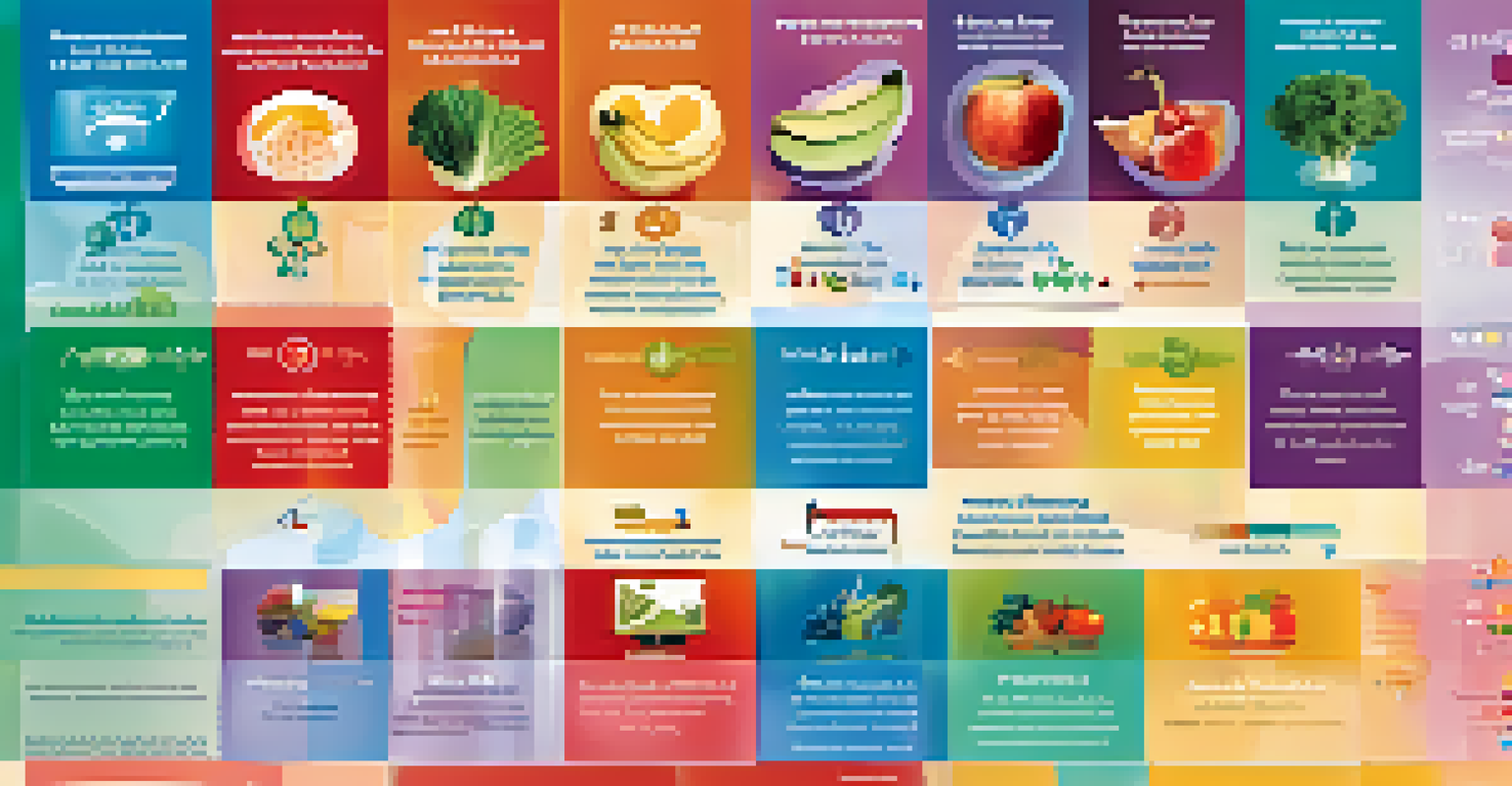Developing Effective Health Messages for Vulnerable Populations

Understanding Vulnerable Populations and Their Needs
Vulnerable populations often face unique challenges that impact their health. These groups can include low-income individuals, racial and ethnic minorities, the elderly, and those with disabilities. Understanding their specific needs is crucial in developing effective health messages that resonate with them.
Health communication that is culturally competent is essential for reducing health disparities among vulnerable populations.
It's important to recognize that these populations may have limited access to healthcare resources, making clear communication even more vital. Tailoring messages to address their specific barriers, such as language or socioeconomic factors, can significantly enhance their effectiveness. By empathizing with these communities, we can create messages that truly meet them where they are.
For instance, a health campaign about diabetes management might include resources that are culturally relevant or available in multiple languages. This approach not only provides essential information but also fosters trust and encourages engagement with health resources.
The Role of Cultural Sensitivity in Health Messaging
Cultural sensitivity is a key component in developing health messages for vulnerable populations. It involves being aware of and respecting the diverse backgrounds, beliefs, and practices of different groups. When health messages are culturally aligned, they are more likely to be received positively.

For example, using culturally relevant imagery or language can help convey messages more effectively. When individuals see themselves represented in health materials, they are more likely to relate to the information. This connection can motivate them to take action towards better health outcomes.
Tailor Health Messages for Communities
Creating health messages that address the specific needs and barriers of vulnerable populations enhances communication effectiveness.
Moreover, involving community leaders in the message development process can enhance cultural sensitivity. These leaders can provide insights into the community's values and preferences, ensuring that the health messages are not only informative but also resonate deeply with the audience.
Simplifying Complex Health Information
Health information can often be complex and overwhelming, especially for vulnerable populations. Simplifying this information is essential to ensure that it is easily understood. This can be achieved by using clear, straightforward language and avoiding medical jargon whenever possible.
The greatest weapon against stress is our ability to choose one thought over another.
Visual aids, such as infographics or videos, can also help break down complicated concepts. For instance, instead of using technical terms, health messages can describe conditions or treatments in relatable terms that everyone can grasp. This makes the information more accessible and actionable for those who may not have a healthcare background.
An example of this is when explaining medication instructions. Instead of listing complex dosage information, a simple chart with visuals can clarify how and when to take medications, making it easier for individuals to follow through.
Engaging the Community in Message Development
Community engagement is crucial in creating effective health messages. By involving community members in the development process, health organizations can gain valuable insights into what resonates with the audience. This collaboration fosters a sense of ownership and trust, making individuals more likely to engage with the health messages.
Focus groups or surveys can be effective tools for gathering feedback from the community. By asking questions about their preferences and concerns, health organizations can tailor messages to better meet the needs of the population. This participatory approach ensures that the messages are rooted in the community's reality.
Engage Communities for Better Outreach
Involving community members in the development of health messages fosters trust and ensures the content resonates with the audience.
For example, if a community expresses concern about mental health stigma, health messages can be designed to address these fears directly. By acknowledging and validating their experiences, organizations can create a supportive environment that encourages individuals to seek help.
Utilizing Technology to Reach Vulnerable Populations
In today's digital age, technology plays a significant role in disseminating health messages. Utilizing platforms like social media, text messaging, and mobile apps can help reach vulnerable populations effectively. These channels can provide timely information and resources directly to individuals, enhancing their access to health services.
For instance, a text messaging service can send reminders for vaccine appointments or health tips tailored to specific needs. This immediate access to information can empower individuals to take charge of their health. Moreover, technology can help overcome barriers such as transportation issues or limited access to healthcare facilities.
However, it's essential to consider the digital divide that may exist within vulnerable populations. Ensuring that messages are available through multiple channels, including traditional methods like flyers or community meetings, can help reach those who may not have internet access.
Evaluating the Impact of Health Messages
Evaluating the effectiveness of health messages is crucial to understanding their impact on vulnerable populations. This involves assessing whether the messages are being received, understood, and acted upon. Gathering feedback through surveys or focus groups can provide insights into the effectiveness of the communication strategy.
Data collection can also help identify areas for improvement. For example, if feedback indicates that certain messages are confusing, adjustments can be made to enhance clarity. This iterative process ensures that health messages remain relevant and impactful over time.
Utilize Technology for Accessibility
Leveraging digital platforms can improve access to health information, but it's essential to provide multiple communication channels to bridge the digital divide.
Moreover, tracking changes in health behaviors or outcomes can provide concrete evidence of a message's effectiveness. By analyzing this data, health organizations can refine their strategies and continue to support vulnerable populations with relevant information.
Best Practices for Creating Effective Health Messages
Developing effective health messages requires a combination of strategies and best practices. First, always prioritize clarity and simplicity in communication. This means using plain language and visuals that make complex information understandable for everyone.
Second, engage with the community to ensure that messages are culturally relevant and resonate with the audience. By involving community members in the process, health organizations can build trust and foster a sense of ownership over health initiatives.

Lastly, regularly evaluate the impact of your messages and be willing to adapt based on feedback and outcomes. This commitment to continuous improvement can help ensure that health messages meet the evolving needs of vulnerable populations, ultimately leading to better health outcomes.